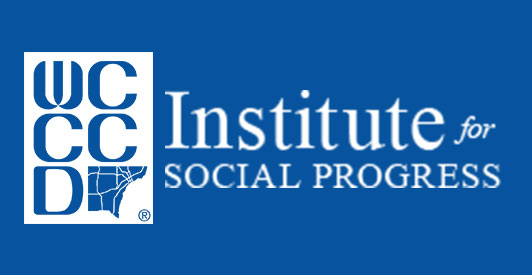Live Blog – Detroit Urban Summit III
Posted On June 29, 2018

9:00am
Dr. Tanya Clay House addressed the structural barriers still prevalent in public schools. Her theme to “learn, live, vote and be together” used the public school setting to address the school-to-prison pipeline, referencing Lyndon B. Johnson. These points echoed Josh Bassett’s earlier citing of the 2007 Supreme Court rulings (quotes from Roberts and Thomas) that maintain segregation in public schools–quotes that claimed integration is merely suggesting segregation again.
Updated at 10:15am
R. L’Heureux Lewis-McCoy’s presentation dealt with identity and gave this quote from the late Grace Lee Boggs. In response to what one can do that is revolutionary, she said, “Find a place, get a home, build a community and stay there. Transform where you are.”
Dr. Ruben Martinez opened with, “This planet does not need human beings, we need the planet,” and spoke in the broader framework of our place in the world and on the planet. He demanded we should be “Pursuing a higher civilization” and that our lives are interdependent.
Bankole Thompson, the only journalist on the panel, encouraged everyone to exercise their first amendment right to speak up, as there are “Too many silent people,” adding to Lewis-McCoy’s previous comments about culpability in society.
Updated at 12:54pm
Professor Elizabeth Anderson said, “The way we challenge stereotypes is by coming together. All types of prejudice are reduced when people come together, backed by institutional support. That is what integration is. We live together, and we learn together,” a sentiment echoing Dr. Tanya House’s earlier theme.
“Why integration matters” is how Dr. Erica Frankenburg opened, examining Department Secretary of Education Betsy DeVos’s policies and Obama’s 2014 Guidance. She cited the February 2018 federal decision in Gardendale, AL that refused to allow school secession– a move which would have furthered segregation. Her call is to re-frame the purpose of public education, to reference the 1968 Kerner Report.
Dr. Andrew Grant-Thomas challenged the notion that only white parents are less accepting of integration, claiming parents of color are also less receptive about school integration. Parents may be receptive to integration in principle, but in practice it is a different matter. Grant-Thomas offered solutions (citing Dr. Frankenburg’s work) and ways to combat continued segregation.
Michael Hilton worked with the National Coalition on School Diversity in New York City. Working in one of the most segregated school systems in the country, the NCSD achieved integration through sympathetic city council members and state level support. But he also found students have been the most effective messengers– that by giving them a voice you empower them, opening the pathway for integration.
Lee Teitel spoke about re-imagining integration. He claimed desegregation and integration are not the same thing, and looked back at Dr. Martin Luther King for inspiration. He posed the question: “What from history do we not want to take with us into the future of integrated schools?” His answer sought outcomes through academics, belongingness, a commitment to dismantling racism and oppression, and diversity.”
Updated at 2:30pm
“Our democratic values have always been contested,” claimed Maya Wiley, citing slavery and Japanese internment. She stated if in 2018 we ban people because of their country of origin, then we need to contest what our democratic values are. Wiley also called to embrace the challenge of pluralism– including and embracing those that hate. “Compassion, not capitulation, is our biggest challenge,” echoing Dr. King. In a nod to the next speaker, Dr. John A. Powell, she said he’s not an optimist, but a possibilist.
Posing the question, “The problem of ‘Othering’ is the problem of the 21st century. How far have we come?,” Dr. John A. Powell spoke of how to combat otherness and xenophobia. One way to respond to the increase in anxiety from change, according to Powell, is through ‘bridging social capital.’ To fix ‘othering’ he offered a solution in regards to integration of not ‘saming, but belonging.’
Leonard Pitts said we must demand respect and dignity for women, Muslims, Mexicans, LGTBQ and the white poor. Pitts’ claim underscored Wiley’s encouragement to fight hate with compassion by reaching out, also hinting at Powell’s ‘bridge’ mentioned earlier. His call to action was to educate, advocate and participate.
Dr. Wil del Pilar’s presentation highlighted the disproportionate structural barriers in place in schools. These barriers are in funding and representation, and they affect opportunity and increase the achievement gap, claimed del Pilar.
Dr. Randall Robinson called out media coverage for the “toxic portraits of our communities.” He cited the recent Democratic primary winner Alexandria Ocasio-Cortez’s portrayal in the media and how misleading it was.
Updated at 4:15pm
Natalie Moore’s research in the Chicago area deals with housing segregation and how the practices of redlining and restrictive covenants are still being practiced today. She made the claim that while one can transcend class, one can never escape race.
Dr. Maria Krysan addressed the cycle of housing segregation, claiming legacy metropolitan cities like Detroit and Chicago, where segregation was high in 1980, had levels that barely declined since 2010. To answer “Why people continue to live in separate neighborhoods,” Krysan claimed these as the classic problem areas: economics, preferences and discrimination. While those issues are important, however, her research has found that media, social networks and lived experiences play a more pivotal role in perpetuating segregation in housing.
Augmenting Dr. Randall Robinson’s presentation on images and portrayal, Ilya Benjamin Washington spoke on the power of images through the spaces we inhabit.
Diversity and integration equals opportunity, claimed Rob Breymaier. He has successfully fought housing segregation through integration and diversity in Oak Park, Il and linked the story of his city’s success with Dr. Krysan’s previous work in this area.
Godfrey Dillard highlighted the recent case of Asian students in Harvard alleging reverse discrimination and how the court’s decision will affect the outcome for minority students everywhere.

